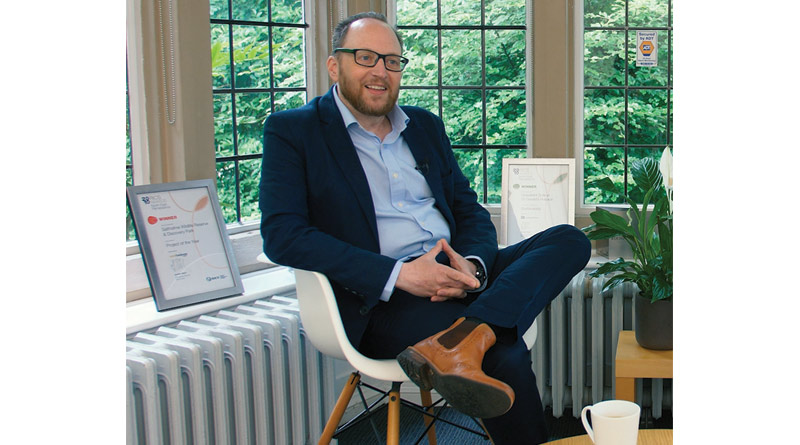Realising The Future Of Hospice Design For Young People
By Stuart Franklin, Associate Director at JDDK Architects (www.jddk.co.uk)
The importance of UK hospice care and its place within our society cannot be underestimated. Putting patients, their families and the people caring for them at the heart of design is essential and never more important than in the case of young adults requiring hospice care provision.
The transition into young adulthood can be incredibly complex and the impact that the wider environment and physical space can have on this experience for a young person is immeasurable.
With developments in medication and health technology advancing like never before and subsequently life expectancy increasing amongst both the old and the young, demand for hospice provision for younger people is expected to increase even more.
Here Stuart Franklin considers four key pillars to place front and centre when thinking about the future of hospice design for young people.
Factor emotion into design
Dealing with teenagers and young adults who want not only a say in how their space is used, but privacy, dignity and independence within that space, which translates differently depending on the individual and their specific needs, can in some instances present unforeseen challenges.
It is vital to always consider the bigger picture, in societal terms, of giving young adults hope. One poignant finding from our years of work in this space has been the importance of consulting with users from the very start of a project and throughout its journey. Hospices are user-centric buildings so getting in the minds of the people who will be using and living in them will always help to find the best solution together.
Consider a not so ‘typical’ environment
The hospices of today that will last into the future need to be truly flexible spaces, leading into and flowing from one another. Exploring ways to encourage inclusivity and, in some instances, independent living, must also be considered.
People understand design more than ever before, particularly this younger age group, so elevated and sophisticated design which is contemporary and understated is essential. Designing a home-from-home environment rather than a typically institutionalised ‘hospital’ space is a key part of the process. This can be anything from disguising a hoist sling in a bathroom or hiding other necessary care equipment or settings in a subtle way, as well as ensuring patients have access to functionality to allow them to control their own environment with regards to lighting, heating and ventilation.
We find outdoor space and layout to be a critical factor in young adult hospice design, as, if approached correctly, it can reap so many positive benefits for patients and their visitors. Ensuring sustainability is also at the heart of everything, from the materials used through to the build process, is an area of growing importance to young people too.
Give young people their say
In our experience, young people aren’t always used to having a say in things which directly impact them, so giving them a voice should be part of the design approach, as it can be hugely positive and empowering for them at this stage in their journey. From the outset, we always make sure to get a thorough ‘brief’ from the patient, alongside hospice staff and their families – everyone gets involved.
A big part of our role is to tease answers out of users, encouraging them to think outside of the box to ultimately help them shape a better quality of life for themselves. Giving these young adults their own social space is the crux of what we are trying to achieve. We incorporate all the different things they should expect as part of this transition from childhood into early adulthood, including space to entertain. These are all the basic things we would expect as adults but in a familiar environment which takes transitional considerations into account, such as proximity to their previous hospice location. We listen throughout to flex and change the design as needed, meaning every build is as unique as its inhabitants.
Focus on the future of hospice design
Developments in medication and health technology are advancing like never before and subsequently life expectancy is increasing amongst both the old and the young. We expect to see a significant increase in the demand for hospice provision for younger patients because of this and a greater emphasis put on these spaces as social hubs providing community connections, for those both directly and indirectly impacted by young adults requiring hospice care. Whilst health conditions can continue to be managed and treated, the social needs associated with holistic care will need to catch up, such as considering the wellbeing and mental health provisions for patients and providing respite resources for carers.
It’s also important to remember that admission into one of these spaces doesn’t always signify ‘the end’ and in many instances they are there to get better. Not only are hospices providing a huge beacon of hope, they also further ties with local communities in a number of ways, which can be of huge benefit for young patients. We have seen notable success when hospices have collaborated with organisations to facilitate gainful employment or work experience for patients. There is huge scope for advancements and community benefits to aid society and the people at the heart of this essential provision.

